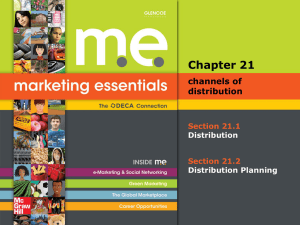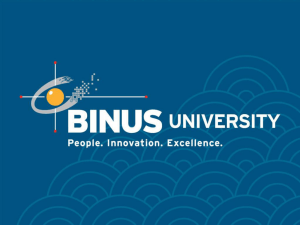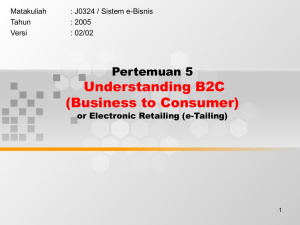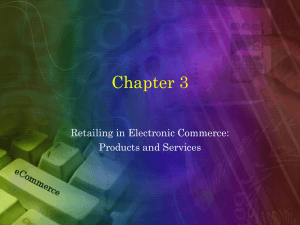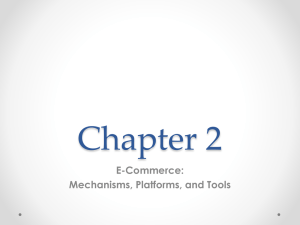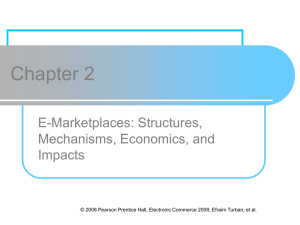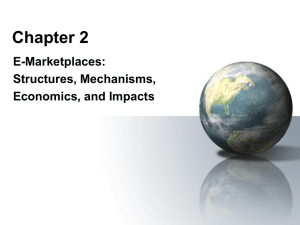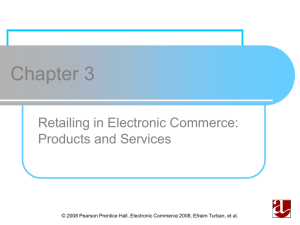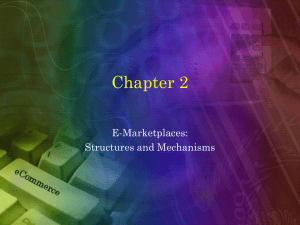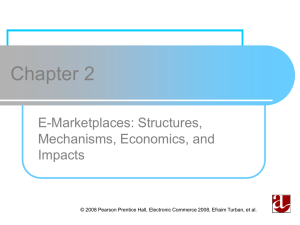Learning Objectives
advertisement
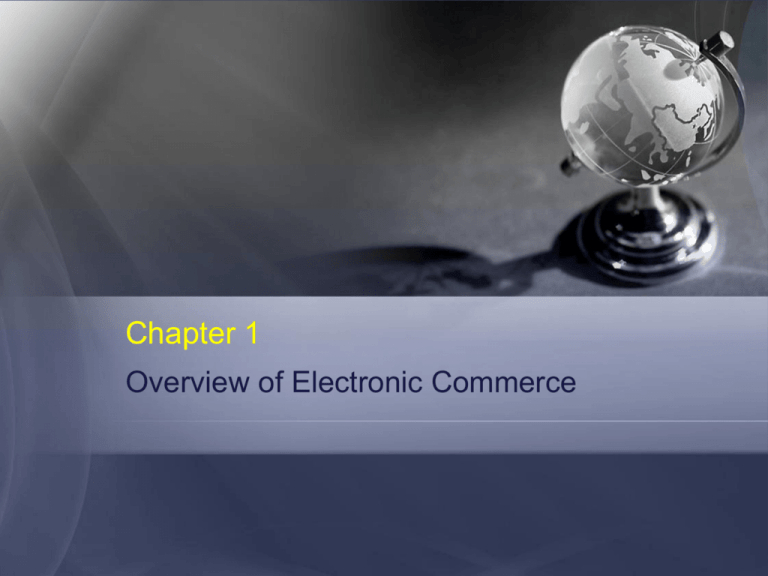
Chapter 1 Overview of Electronic Commerce Learning Objectives 1. 2. 3. 4. Define electronic commerce (EC) and describe its various categories. Describe and discuss the content and framework of EC. Describe the major types of EC transactions. Describe the digital revolution as a driver of EC. Learning Objectives 5. 6. 7. 8. 9. Describe the business environment as a driver of EC. Describe some EC business models. Describe the benefits of EC to organizations, consumers, and society. Describe the limitations of EC. Describe the contribution of EC to organizations responding to environmental pressures. Chapter 2 E-Marketplaces: Structures, Mechanisms, Economics, and Impacts Learning Objectives 1. 2. 3. 4. 5. 6. Define e-marketplaces and list their components. List the major types of e-marketplaces and describe their features. Describe the various types of EC intermediaries and their roles. Describe electronic catalogs, shopping carts, and search engines. Describe the various types of auctions and list their characteristics. Discuss the benefits, limitations, and impacts of auctions. Learning Objectives 7. 8. 9. 10. 11. 12. Describe bartering and negotiating online. Define m-commerce and explain its role as a market mechanism. Discuss liquidity, quality, and success factors in e-marketplaces. Describe the economic impact of EC. Discuss competition in the digital economy. Describe the impact of e-marketplaces on organizations. Chapter 3 Retailing in Electronic Commerce: Products and Services Learning Objectives 1. 2. 3. Describe electronic retailing (e-tailing) and its characteristics. Define and describe the primary e-tailing business models. Describe how online travel and tourism services operate and their impact on the industry. Learning Objectives 4. 5. 6. 7. 8. Discuss the online employment market, including its participants, benefits, and limitations. Describe online real estate services. Discuss online stock-trading services. Discuss cyberbanking and online personal finance. Describe on-demand delivery by e-grocers. Learning Objectives 9. 10. 11. 12. Describe the delivery of digital products and online entertainment. Discuss various e-tail consumer aids, including comparison-shopping aids. Identify the critical success factors and failure avoidance tactics for direct online marketing and e-tailing. Describe reintermediation, channel conflict, and personalization in e-tailing. Chapter 11 E-Commerce Security Learning Objectives 1. 2. 3. 4. 5. 6. 7. Document the trends in computer and network security attacks. Describe the common security practices of businesses of all sizes. Understand the basic elements of EC security. Explain the basic types of network security attacks. Describe common mistakes that organizations make in managing security. Discuss some of the major technologies for securing EC communications. Detail some of the major technologies for securing EC networks components. Chapter 17 Legal, Ethical, and Social Impacts of EC Learning Objectives 1. 2. 3. 4. 5. Describe the differences between legal and ethical issues in EC. Understand the difficulties of protecting privacy in EC. Discuss issues of intellectual property rights in EC. Describe unsolicited ad problems and remedies. Understand the conflict between free speech and censorship on the Internet. Learning Objectives 6. 7. 8. 9. 10. Describe major legal issues in EC. Describe the types of fraud on the Internet and how to protect against them. Describe representative societal issues in EC. Describe the role and impact of virtual communities on EC. Describe the future of EC.
